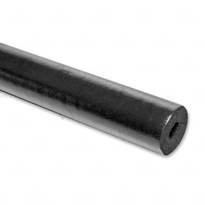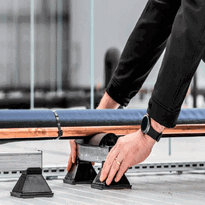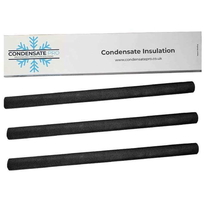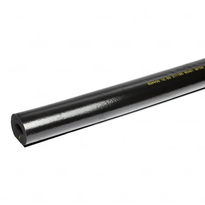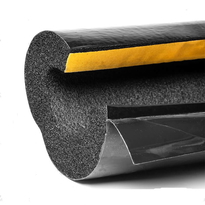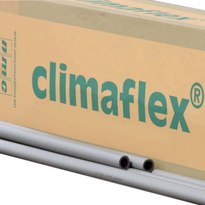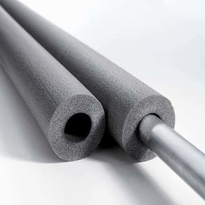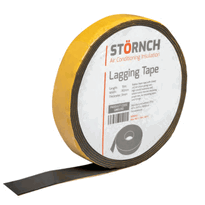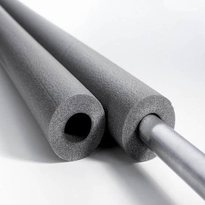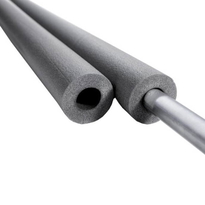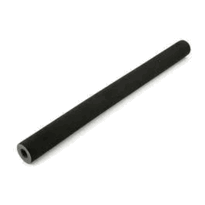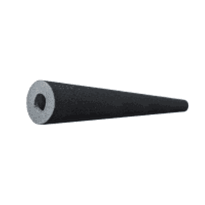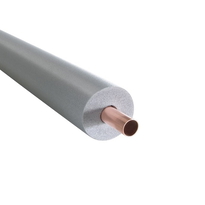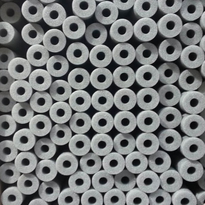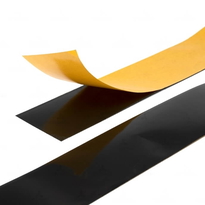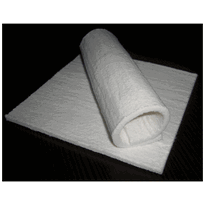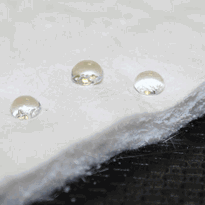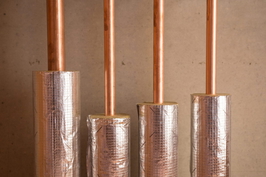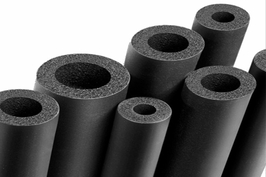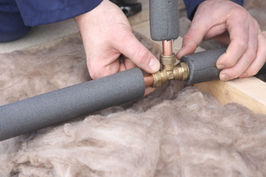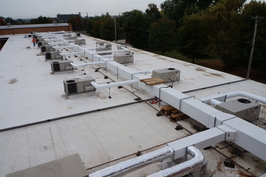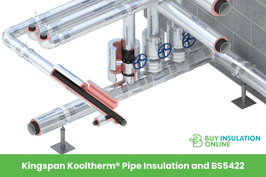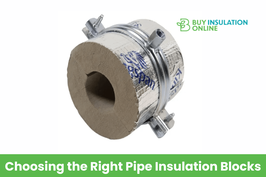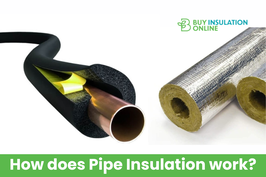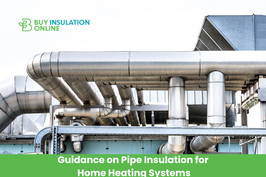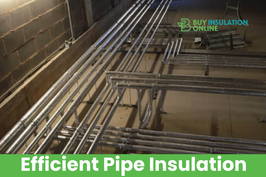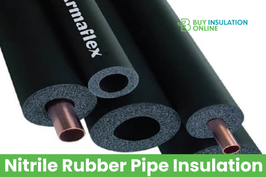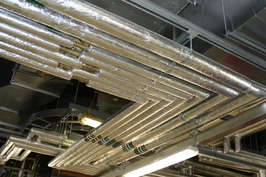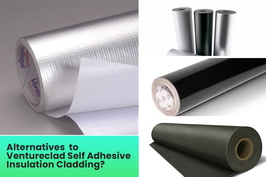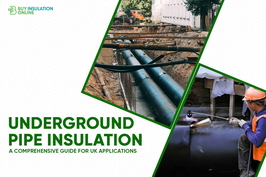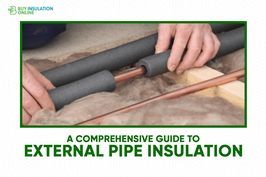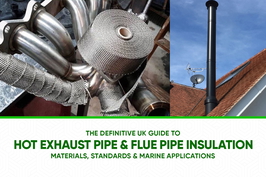Outdoor Pipe Insulation
Outdoor pipe insulation serves as a crucial defence against weather-related damage, helping to reduce heat loss and prevent the risk of freezing, which can lead to pipe bursts. Common insulation materials utilised in the UK include foam, fibreglass, mineral wool, and rubber. The choice of material often depends on the local climate, durability requirements, and budget considerations.
By effectively insulating pipes, you can significantly minimise energy costs, extend the lifespan of the pipes, and reduce the likelihood of condensation and corrosion.
For optimal performance, it is essential to ensure proper installation, which includes sealing joints and achieving a snug fit that can withstand the rigours of outdoor conditions.
There are numerous options available, and expert guidance can help you select the best insulation strategy for your specific needs.
Types of Materials for Outdoor Pipe Insulation
Choosing the right materials for outdoor pipe insulation is vital for safeguarding pipes against environmental elements and ensuring efficient operation. There are several common options, each tailored to specific needs. Fibreglass insulation effectively controls temperature and absorbs sound, making it a practical choice for noise reduction. Mineral wool is capable of withstanding extreme temperatures, making it ideal for outdoor conditions. Polyurethane foam provides excellent insulation and resists moisture, which helps prevent damage from water exposure. Polyisocyanurate (PIR) offers high thermal resistance, making it suitable for high-temperature environments. Polystyrene is appropriate for low-temperature applications, maintaining consistent insulation performance. Many of these materials excel in moisture resistance, fire safety, and durability. Material selection influences the longevity and effectiveness of the insulation in outdoor environments, so choosing the right type is essential for optimal performance. Selecting the appropriate type depends on the specific outdoor conditions and objectives, ensuring that pipes remain protected and operate efficiently over time.
Advantages of Insulating Outdoor Pipes
Insulating outdoor pipes offers several significant advantages, including energy conservation and reduced heating expenses by minimising heat loss. It also serves to protect against freezing temperatures, which can lead to pipe bursts and expensive repairs. In essence, pipe insulation enhances efficiency and safeguards against damage during colder weather conditions. By ensuring that your outdoor plumbing is properly insulated, you not only prolong the lifespan of your pipes but also contribute to overall energy savings. Proper insulation techniques can help maintain the temperature of the water within the pipes, preventing the need for excessive heating and ultimately leading to a more sustainable home environment. Insulation effectively minimizes heat transfer. In light of these benefits, investing in outdoor pipe insulation is a wise choice for homeowners looking to improve their property's resilience against harsh winter weather.
Energy Conservation Benefits
Outdoor pipe insulation provides considerable energy conservation advantages by minimising heat loss and enhancing overall efficiency. By retaining heat within the pipes, insulation can significantly reduce heat loss, which translates to less energy required to maintain water temperatures. This leads to lower energy bills and a reduced carbon footprint. When pipes are properly insulated, heating systems operate more efficiently, conserving fuel and lessening wear on equipment. Additionally, it accelerates the delivery of hot water, thereby minimising waste and energy consumption. Moreover, insulating outdoor pipes aids in preventing condensation, mould, and corrosion, which in turn extends the lifespan of the pipes. This straightforward measure benefits everyone by helping to save money, protect the environment, and ensure dependable access to hot water. - Reduces heat loss significantly - Lowers energy expenses - Decreases fuel usage - Prevents condensation and corrosion - Prolongs the lifespan of pipes and minimizes maintenance costs over time.
Protects Against Freezing
During cold weather, water inside unprotected pipes can freeze, leading to significant damage. Frozen water expands, creating internal pressure that can crack or burst the pipes. Insulation plays a vital role in keeping water above freezing temperatures, thereby significantly reducing this risk. Proper insulation minimizes heat transfer. Common insulation options include foam sleeves, pipe tape, and electric heat tape, all of which help maintain warmth in the pipes. Additionally, ensuring that home thermostats are set to remain above a certain temperature can help protect indoor plumbing. For outdoor, basement, or attic pipes located in unheated areas, insulation serves as a crucial barrier against the cold. By preventing water from freezing, insulation minimises the chances of costly repairs, water damage, and disruption. It provides peace of mind, knowing that pipes are less likely to burst, even during harsh winter conditions, thus safeguarding both property and indoor comfort.
Planning for Effective Outdoor Pipe Insulation
Have you ever considered how weather conditions can impact the effectiveness of pipe insulation outdoors? Proper planning is essential to ensure pipes remain protected throughout the year.
It begins with accurately measuring the total length of all outdoor pipes, including fittings and valves, to ensure sufficient insulation can be acquired.
It is also crucial to consider exposure to sunlight, wind, and moisture, as well as accounting for seasonal temperature fluctuations. Mapping microclimates, such as shaded or exposed areas, aids in tailoring insulation solutions to specific environments.
Additional strategies may include using heat tapes in areas at risk of freezing, installing weatherproof jackets, and devising effective drainage plans to manage condensation.
Regular inspections and adjustments are necessary to maintain long-term durability. Thoughtful planning guarantees that insulation lasts, keeps pipes safe, and upholds overall system efficiency.
Measure all pipe lengths accurately
Identify areas exposed to harsh weather
Use supplementary heating where needed
Plan for moisture management strategies
Schedule routine inspections
Key Factors in Selecting Insulation Materials
Choosing the appropriate insulation material is crucial and largely influenced by the local climate and budget limitations. It's essential that the materials selected can endure the specific weather conditions prevalent in the area, such as cold winters or sweltering summers, while also remaining within a reasonable financial scope. Material durability under local weather conditions ensures the insulation maintains its protective qualities over time, reducing the need for frequent replacements. Accessibility for installation and future maintenance should also be taken into account, ensuring that the insulation provides effective and durable protection for pipes. This comprehensive approach will help guarantee that the insulation not only meets immediate needs but also supports long-term performance and efficiency.
Climate Suitability
Climate plays a pivotal role in selecting outdoor pipe insulation, as varying weather conditions necessitate specific material properties to ensure adequate protection.
In colder regions, insulation must possess a high R-value to thwart freezing and should be sufficiently thick to mitigate heat loss. In areas of extreme heat, materials such as EPDM rubber are ideal, as they can withstand temperature fluctuations without sustaining damage.
When considering UV exposure and rainfall, it's essential to utilise water-resistant coverings and UV-stable materials to prevent degradation over time. Choosing the right insulation material for specific climates can greatly extend the lifespan of outdoor pipes.
In humid climates, moisture resistance becomes paramount; closed-cell foam and rubber are effective as they resist mould and water absorption. For locations subjected to wind or physical exposure, employing durable outer jackets and flexible materials enhances longevity and performance.
Key considerations include:
Insulation with a high R-value for colder climates
UV-resistant and waterproof coverings
Flexible materials that resist cracking
Thick insulation in freezing environments
Durable outer jackets for physical protection
Cost and Accessibility
Cost and accessibility are crucial factors when choosing outdoor pipe insulation.
Foam insulation is the most economical option, readily available at major retailers and online. Its affordability makes it a popular choice for many homeowners.
Rubber insulation, while slightly more expensive, offers enhanced durability and flexibility, positioning it as a mid-range option.
Fibreglass insulation is also an alternative, though it may be pricier, particularly for thicker varieties.
There are specialised options such as spray foam or polyiso, which can provide superior insulation but typically come at a higher cost.
Most insulation materials are easily accessible and compatible with various pipe types, including copper and PVC. Widespread availability of materials can help reduce delays in project timelines.
The ease of installation can vary, affecting the overall project costs.
Ultimately, the combination of affordability and accessibility simplifies the process of selecting the appropriate insulation for your needs.
Common Applications of Outdoor Pipe Insulation
Outdoor pipe insulation is widely utilised in various systems to protect pipes from environmental factors and enhance efficiency. It plays a crucial role in preventing freezing and overheating, particularly in adverse weather conditions. Pipe Bores are often accounted for when selecting insulation to ensure proper fit and thermal performance, especially for different pipe materials. Insulation materials such as EPDM rubber and nitrile are selected for their durability and UV resistance, ensuring they endure sunlight and moisture. This type of insulation is commonly found in residential water supply lines, outdoor HVAC systems, industrial piping, solar heating systems, and district heating pipelines. Furthermore, outdoor pipe insulation helps control condensation, thereby reducing the risk of corrosion. Proper coverage of insulation minimises water damage and noise transmission while extending the lifespan of the pipes. Key benefits of outdoor pipe insulation include: - Protecting water supply pipes from freezing - Maintaining the efficiency of outdoor HVAC systems - Shielding industrial pipes against weathering - Supporting solar heating and cooling applications - Controlling condensation and mitigating corrosion risks
Cost and Environmental Considerations
When selecting outdoor pipe insulation, it's vital to understand the balance between initial costs and long-term advantages. Prices can vary based on the type of insulation and its durability. Higher-quality materials may incur a greater expense upfront but offer longevity, resistance to UV rays, weather conditions, and animal damage. Recycling programs for fiberglass and mineral wool can assist in reducing waste and environmental impact. Effective insulation plays a crucial role in reducing energy consumption by minimising heat loss or gain, leading to significant savings on heating expenses, which is beneficial for both personal finances and the environment. Investing in robust insulation also extends the lifespan of pipes, subsequently lowering maintenance and replacement costs.
From an environmental perspective, proper insulation reduces energy use, thereby cutting greenhouse gas emissions. Utilising recyclable or recycled insulation materials can help decrease landfill waste; however, it's essential to acknowledge that manufacturing processes may be resource-intensive. Ultimately, making an informed choice involves weighing initial outlays against sustainability and ongoing savings, fostering a community that prioritises responsible stewardship and a sense of belonging.
Overcoming Challenges in Outdoor Pipe Insulation
Effective outdoor pipe insulation necessitates addressing various environmental challenges that can undermine its performance. Factors such as moisture, temperature fluctuations, UV exposure, physical damage, and corrosive elements all pose risks to insulation durability.
To achieve success, it's vital to implement strategic measures:
Utilise water-resistant rain shields to divert moisture away from susceptible pipe areas.
Seal all joints with weatherproof tape to avert leaks.
Choose insulation with high compressive strength for enhanced durability.
Encase insulation with metal jacketing to provide UV protection and mechanical defence.
Regularly inspect and repair protective coverings to sustain their effectiveness.
Maintenance and Long-term Care
Regular maintenance and careful monitoring are essential for ensuring that outdoor pipe insulation remains effective over time. Conducting frequent visual inspections enables the identification of any cracks, tears, or displacement that could expose pipes to weather damage.
It's crucial to check for moisture accumulation, mould, or signs of compression, particularly after adverse weather conditions or in areas with heavy foot traffic.
Monitoring the insulation ahead of winter is key to ensuring it's intact and prepared for colder temperatures. Sealing joints with weatherproof tape, installing rain shields, and replacing any damaged components are effective methods to keep moisture at bay and maintain the quality of the insulation.
Periodic cleaning and replacing brittle or damaged insulation will help prolong its lifespan. Keeping a record of repairs can assist in tracking the insulation's condition over time.
Using durable, weather-resistant materials and arranging for professional assessments every few years can sustain optimal performance, providing peace of mind for long-term outdoor protection.
Best Practices for Installing Outdoor Pipe Insulation
Proper installation of outdoor pipe insulation begins with careful assessment and preparation. First, identify all exposed outdoor pipes, including those in crawl spaces, exterior walls, and unheated areas.
Evaluate environmental factors such as temperature, moisture, sun exposure, and potential damage from weather or animals. Measure the length and diameter of pipes accurately to ensure you purchase the correct insulation. Shut off water lines and drain them to prevent any water-related damage during installation.
Choose insulation materials that are suitable for the local climate and the type of pipe.
Ensure that insulation fits tightly without any gaps.
Cover valves and spigots separately with protective covers.
Use tape or zip ties to secure insulation firmly.
Regularly inspect and repair any damage to maintain effectiveness.
Conclusion
Proper outdoor pipe insulation is essential for protecting pipes from freezing temperatures and reducing energy loss. Selecting the right materials, planning meticulously, and adhering to best installation practices are key to ensuring long-lasting results. Regular maintenance is crucial, as it helps identify issues early, thereby extending the insulation's effectiveness.
Homeowners should also consider the costs and environmental impacts when choosing sustainable options. Effective insulation not only safeguards pipes, but it also contributes to significant savings by preventing damage and ensuring system reliability in various weather conditions.
Investing in quality insulation is a wise decision that benefits both the home and the environment. By prioritising proper insulation, you can enjoy peace of mind knowing your plumbing is well protected all year round.
